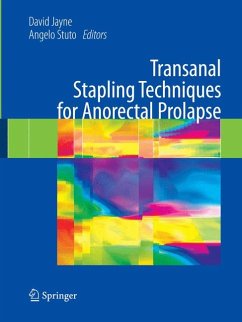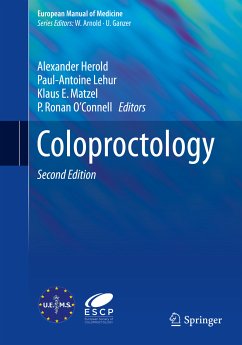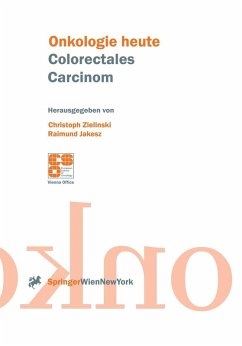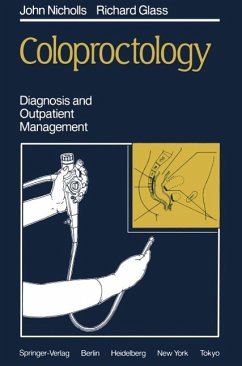
Transanal Stapling Techniques for Anorectal Prolapse (eBook, PDF)
Versandkostenfrei!
Sofort per Download lieferbar
80,95 €
inkl. MwSt.
Weitere Ausgaben:

PAYBACK Punkte
40 °P sammeln!
It has never been easy to introduce new concepts and therapeutic in-terventions into surgical practice. When attempting to do so, one is faced with the interagency of traditional dogma, which still in this era of evidence-based medicine tends to dominate the surgical thought pr- ess. This is particularly so in the area of coloproctology, where prejudice and personal opinion often influence objective analysis whenever tradition is challenged. A large body of literature on anorectal prolapse has accumulated over the years; although much is based on personal viewpoint rather than scientific evide...
It has never been easy to introduce new concepts and therapeutic in-terventions into surgical practice. When attempting to do so, one is faced with the interagency of traditional dogma, which still in this era of evidence-based medicine tends to dominate the surgical thought pr- ess. This is particularly so in the area of coloproctology, where prejudice and personal opinion often influence objective analysis whenever tradition is challenged. A large body of literature on anorectal prolapse has accumulated over the years; although much is based on personal viewpoint rather than scientific evidence, it has nevertheless been passed down through the generations as ac-cepted wisdom and practice. As a consequence, it is a challenge to change the mindset of a generation of surgeons and to introduce new concepts and novel techniques which at first might appear to be a radical departure from conventional teaching. It is obviously not possible to present the basis for the develop-ment of transanal stapling techniques for anorectal prolapse in this Foreword; this is dealt with in detail elsewhere in this book. The in-terested reader will have the opportunity to share in the new and emerging concepts surrounding anorectal prolapse and to deepen their understanding of the pat- physiology and basis for surgical correction. Although hemorrhoidal disease and external rectal prolapse have been known about for centuries, the understanding of internal rectal prolapse (intussusception) and rectocele has only really advanced with the emergence of radiological imaging tech-niques, such as defecography.
Dieser Download kann aus rechtlichen Gründen nur mit Rechnungsadresse in A, B, BG, CY, CZ, D, DK, EW, E, FIN, F, GR, HR, H, IRL, I, LT, L, LR, M, NL, PL, P, R, S, SLO, SK ausgeliefert werden.













